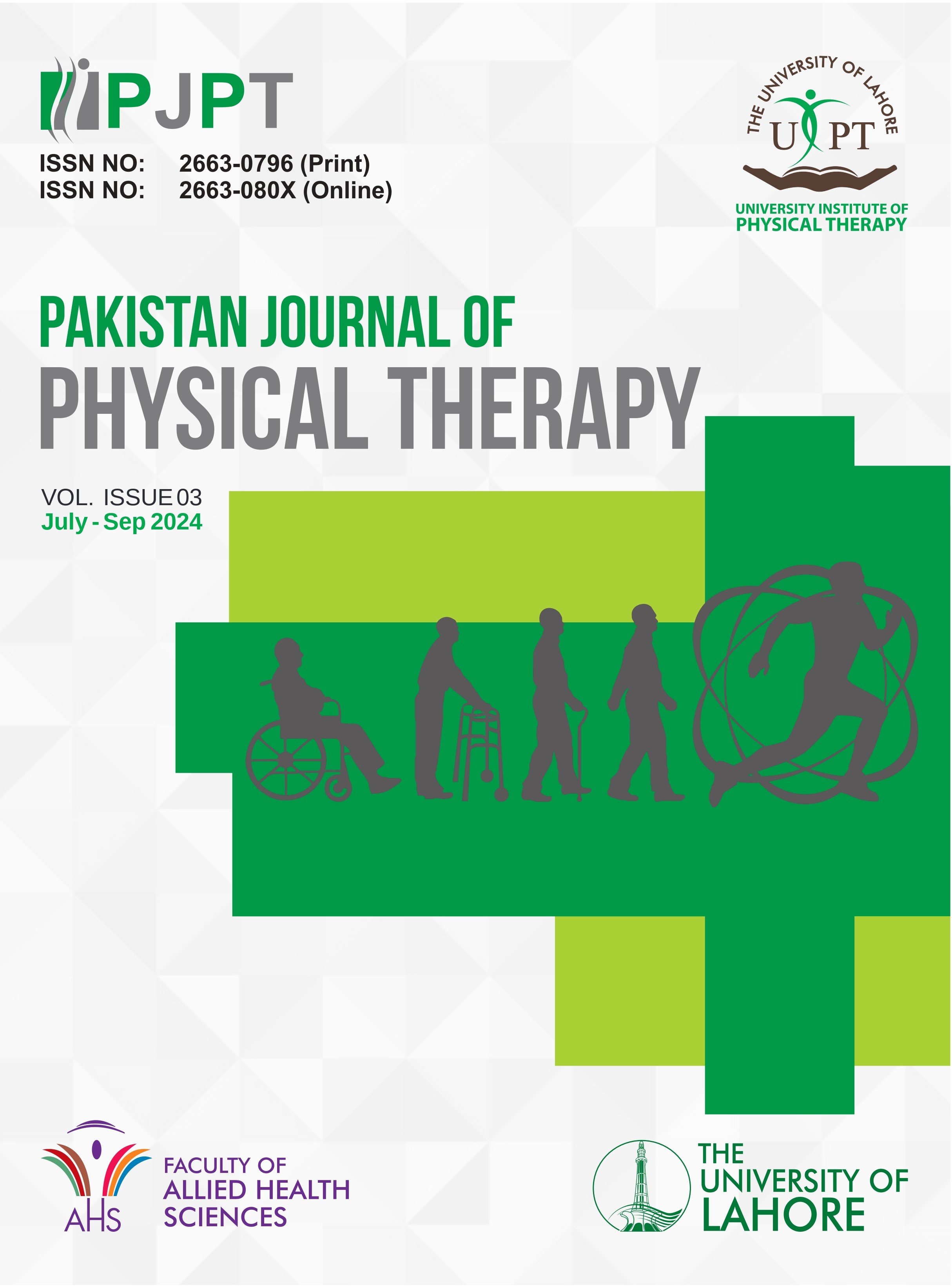ESTIMATING THE PREVALENCE OF GASTROCNEMOUS CONTRACTURE AND DISABILITY AMONG PARAMEDICAL STAFF WITH PLANTAR FASCIITIS
DOI:
https://doi.org/10.52229/pjpt.v7i3.3455Abstract
Plantar fasciitis is a painful condition affecting the heel and bottom of the foot. It happens when
the plantar fascia, a thick band of tissue supporting the foot's arch, becomes swollen or irritated. When this muscle becomes tight or shortened, it puts extra pressure on the plantar fascia. This can make plantar fasciitis develop or get worse. In simple terms, if the gastrocnemius muscle is tight, it can make plantar fasciitis more likely or make existing pain worse. Objective: The purpose of this study was to determine prevalence of gastrocnemius contracture among paramedical staff with plantar fasciitis. Methods: The research design for this study is a cross-sectional study. A convenient sampling strategy was employed, with inclusion criteria consisting of both male and female participants aged between 25 to 45 years, having a minimum of two years of experience and at least three hours of duty. Exclusion criteria included participants with past surgical history or trauma. The sample size was determined to be 183 using the WHO Calculator. Data collection utilized the Plantar Fasciitis Pain Scale, Windlass test for plantar fasciitis, and Silfverskiold test for gastrocnemius. Results: Prolonged standing affected 71.6% of the population. Detailed statistics on plantar fasciitis depict pain severity and its impact. Mobility, function, and pain impact on various activities are discussed. Medication usage patterns and effectiveness are also explored. Significant associations (p-value 0.001) between the Silfverskiold and Windlass tests shows strong association between them. Conclusion: In conclusion, statistics provide valuable insights into the sample population, reinforcing established research findings on risk factors and symptom presentation in plantar fasciitis. Females showed slightly higher prevalence of gastrocnemius contracture as 46.4% and plantar fasciitis as 52%. Duty hours and experience levels closely match established standards and demonstrate diverse clinical profiles.
Keywords: Disability, Plantar fasciitis, Gastrocnemius muscle, Silfverskiold test, Windlass test
Additional Files
Published
How to Cite
Issue
Section
License
Copyright (c) 2024 Authors retain copyright and grant publishing rights to Pakistan Journal of Physical Therapy.

This work is licensed under a Creative Commons Attribution 4.0 International License.



